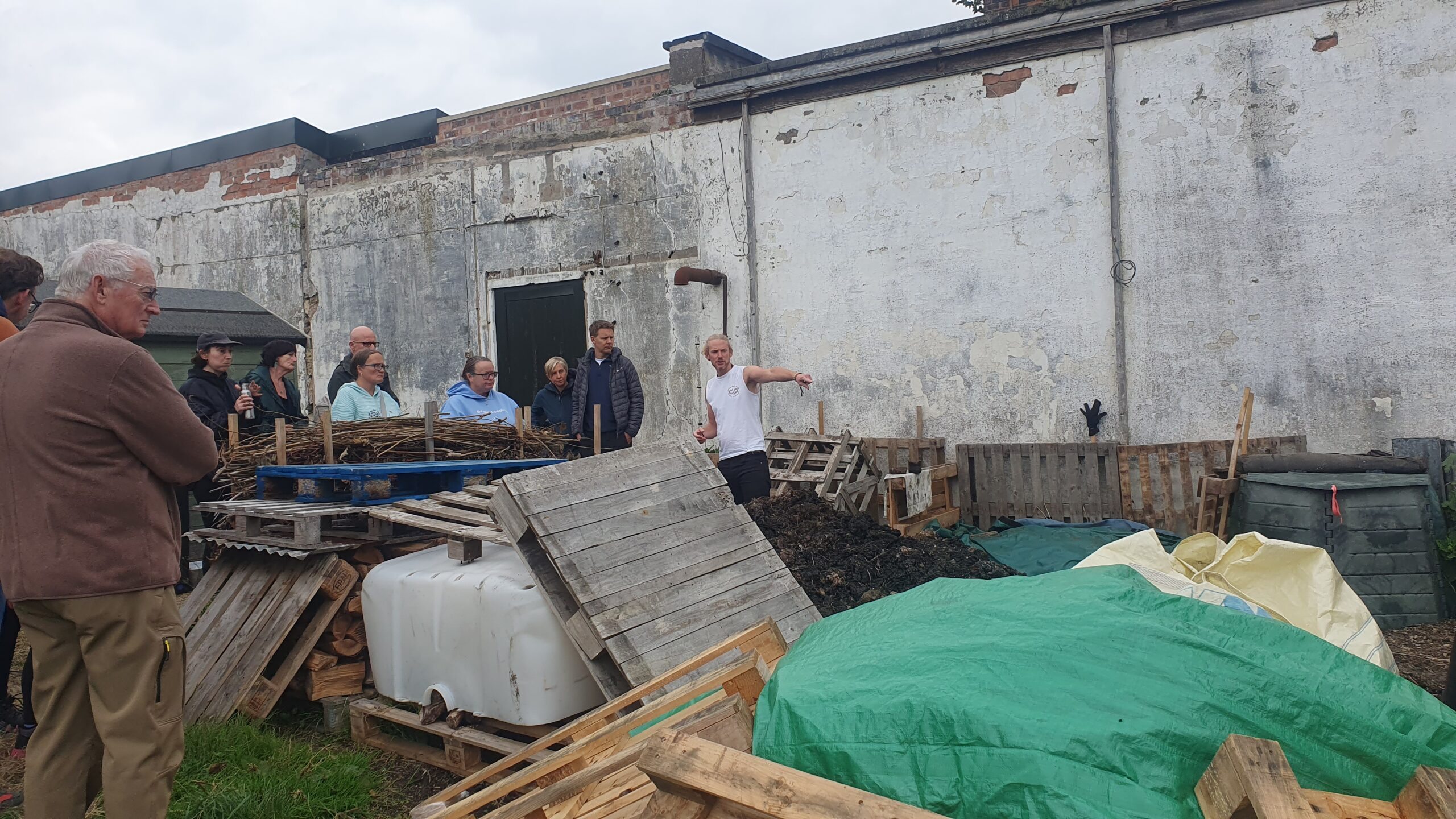Decomposition is a natural, complex, and extremely important process on this planet, and it occurs quite happily and effectively without any of us intervening, or even being aware that it’s happening most of the time.
When we compost at home, we aim to harness that raw ecosystem power and turn it to our advantage… we ourselves as composters could be considered symbiotes with the various organisms that we are encouraging in our compost systems! Yasss! We’re IN THE LOOP again!
There are many different ways to compost, and on every scale imaginable: from the enormous anaerobic digestion plants that process tens of truckloads of waste per day, to the very small, like Amy’s wee worm farm under the sink.
Composting at RWG
Over the last year, I’ve been developing the different composting methods at Ravenscraig Walled Garden as part of my job as the community gardener. We currently have…
- Compost bins
- Wide compost bays
- Hot bed
- Hügelbed
- Leaf pile
- Manure pile
- Dead hedge
- Hot bin
Compost bays
I sited the compost bays in an underused corner that doesn’t get full sun, but is handy to access from the cabin and the rest of the garden.
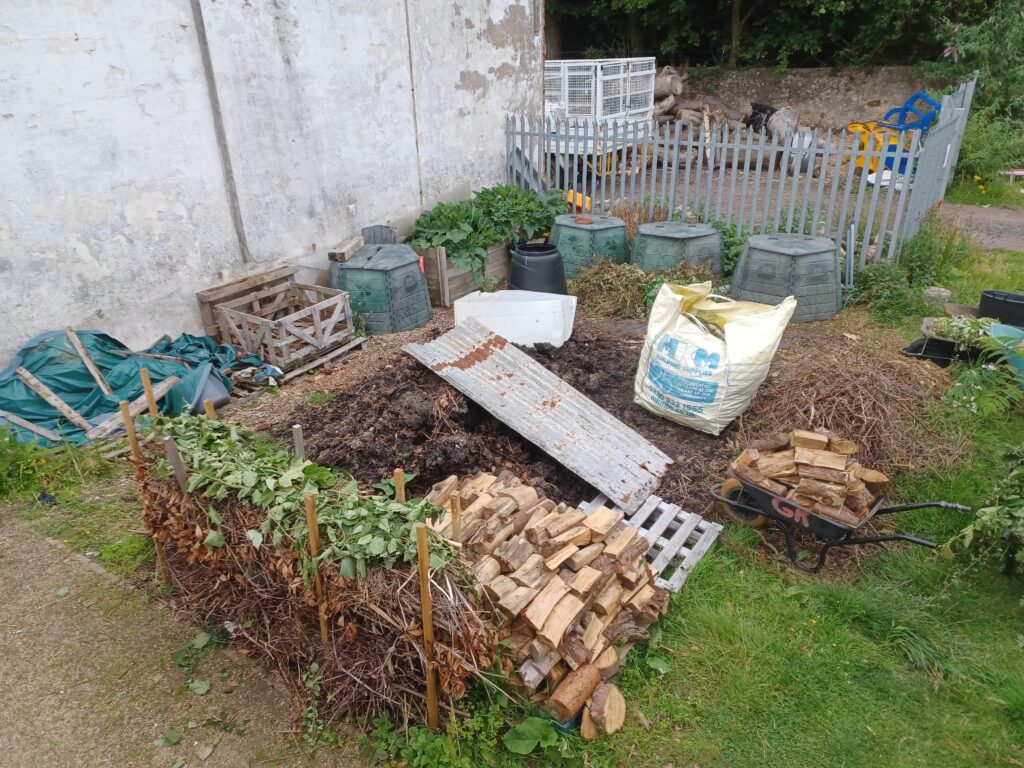
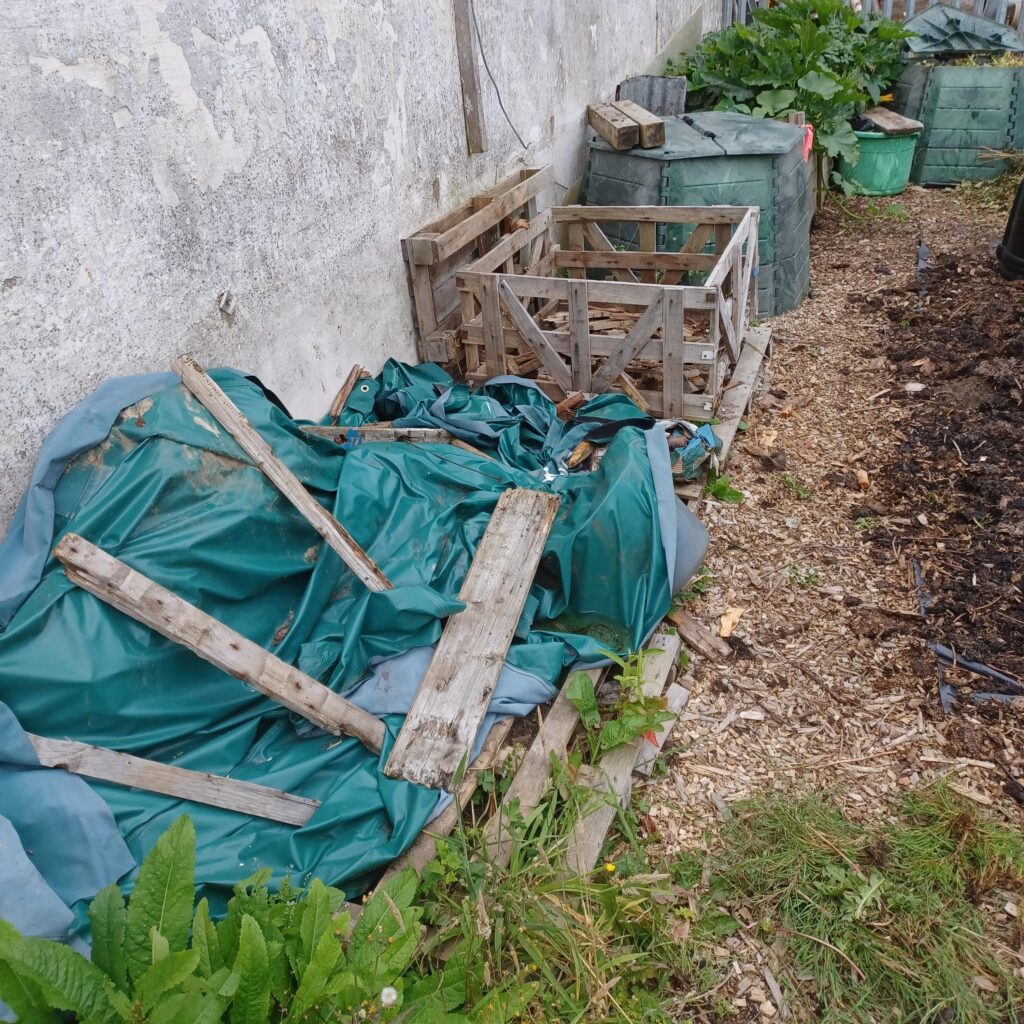
With the help of volunteers, we cleared the space and lined the wall with palettes to protect the listed building it backed onto as best we could.
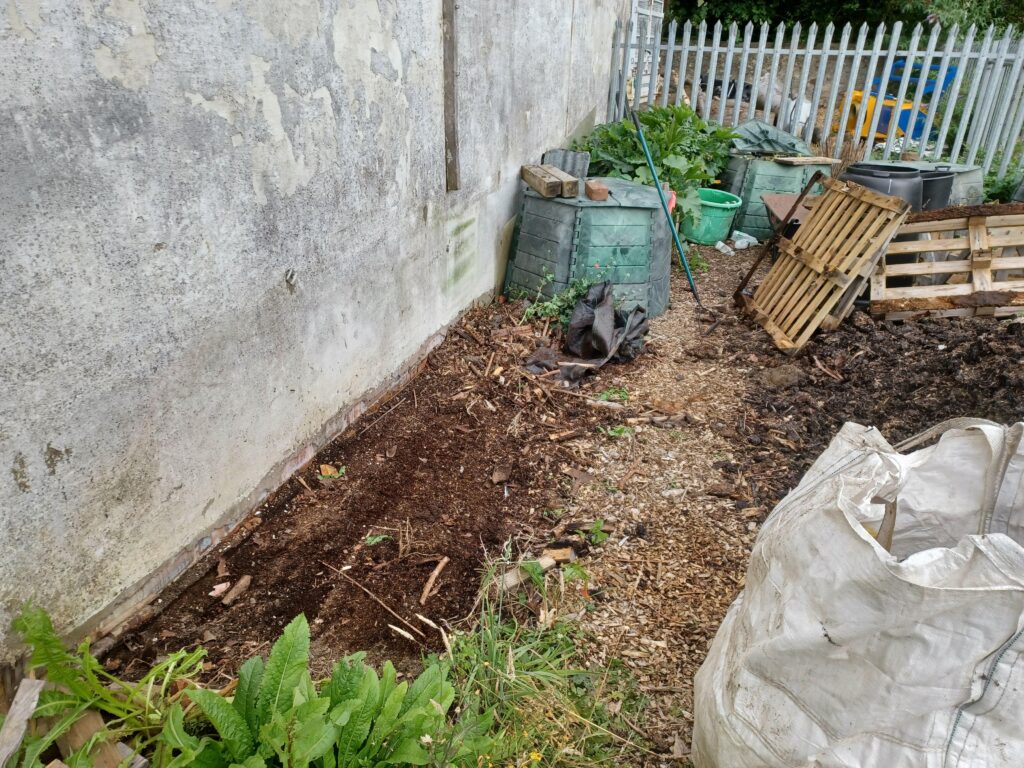
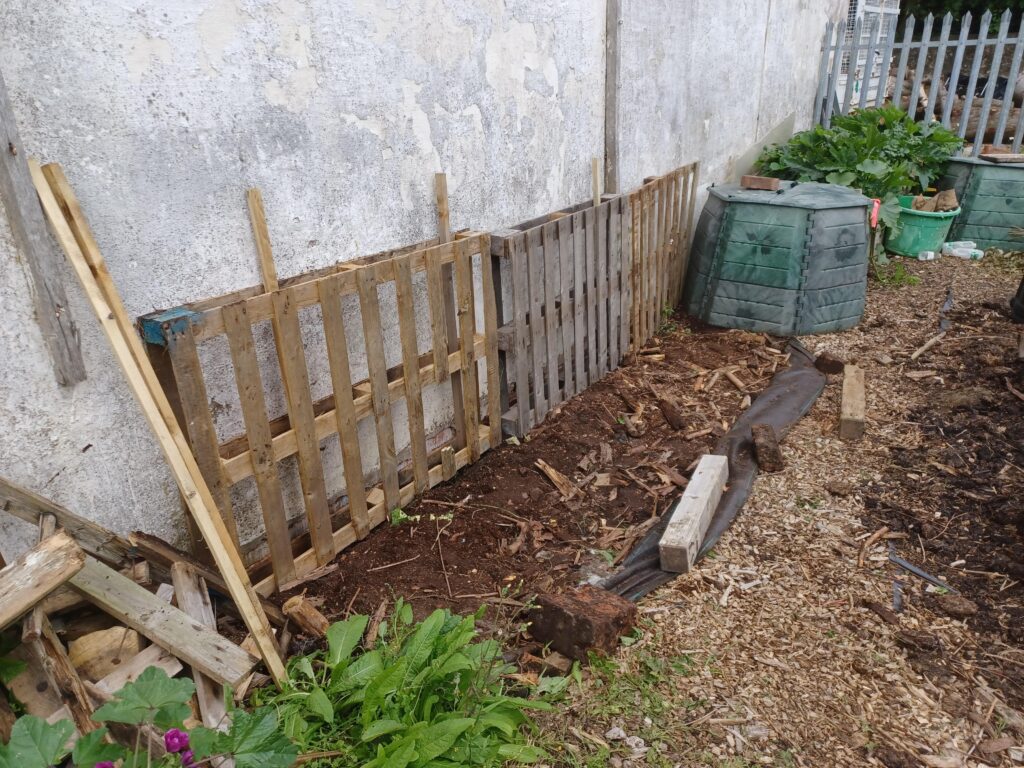
We used palettes for the sides as well, choosing depth over height to try to maximise the space we had to work with.
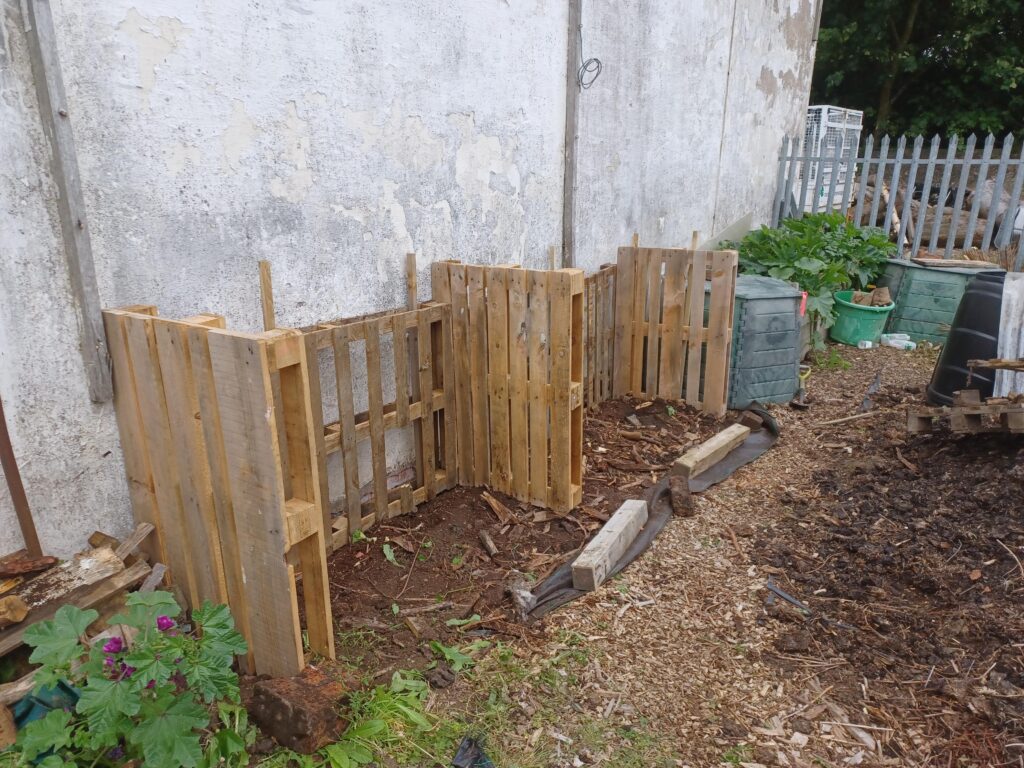
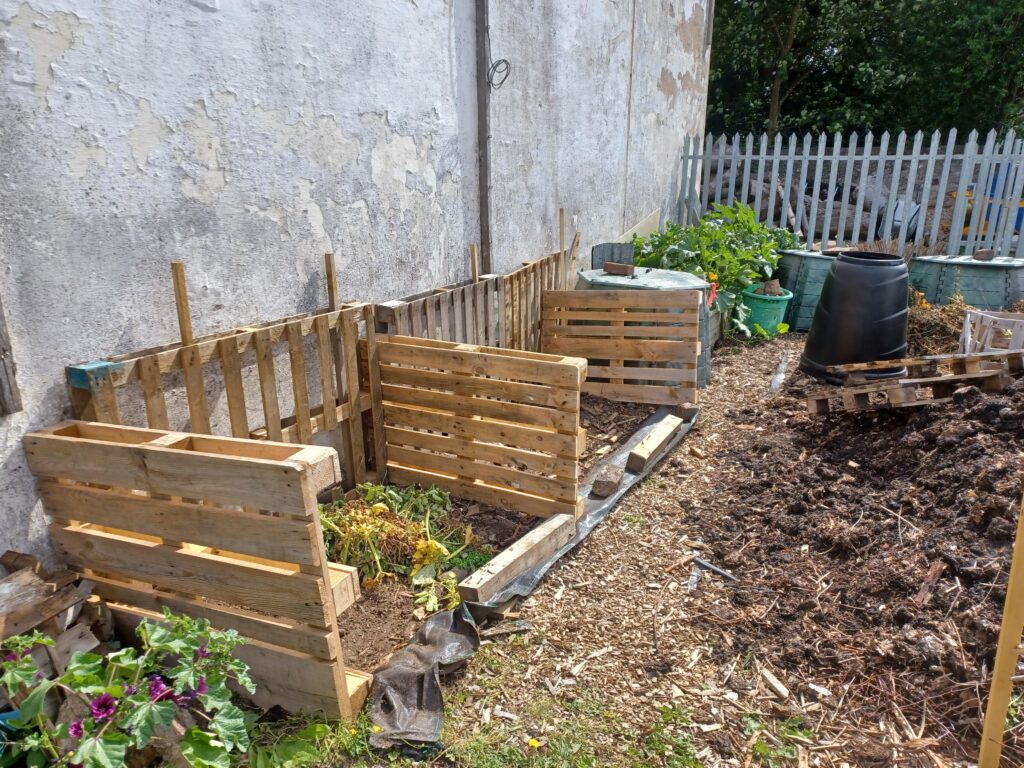
Then we layered materials into the bays, starting with sticks, woodchip, leaves, then throwing on the greens (in this case potato and bean plants), all the while adding liberal sprinklings of manure – a rich source of worms – which will help the compost to be really active and lively.
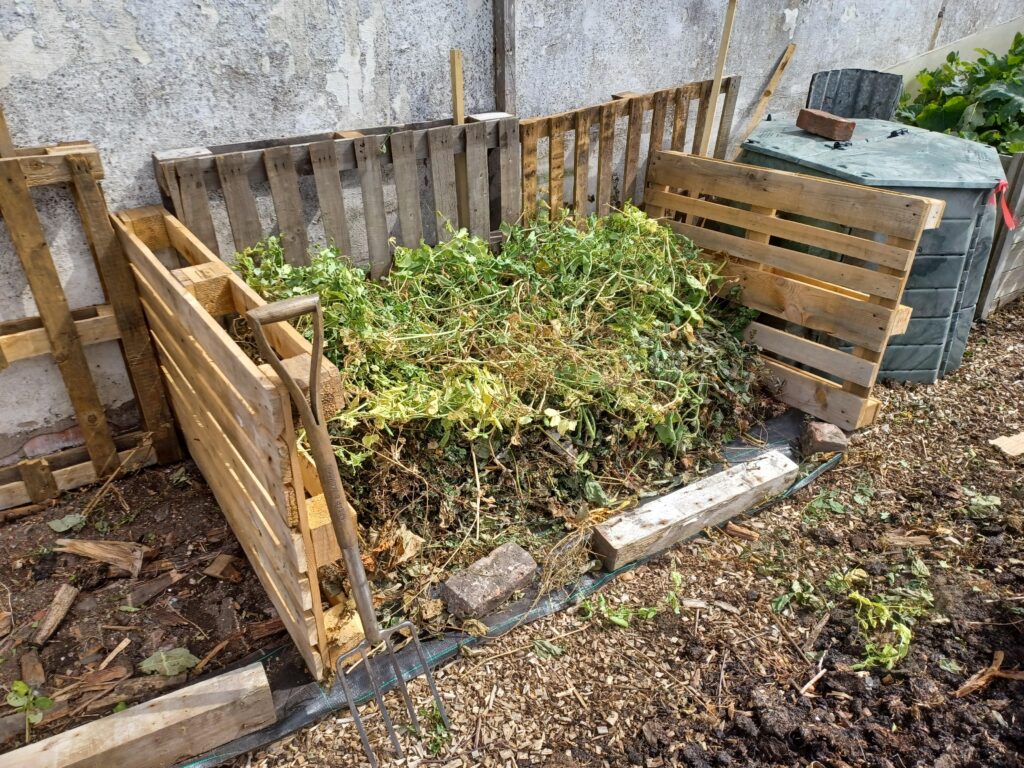
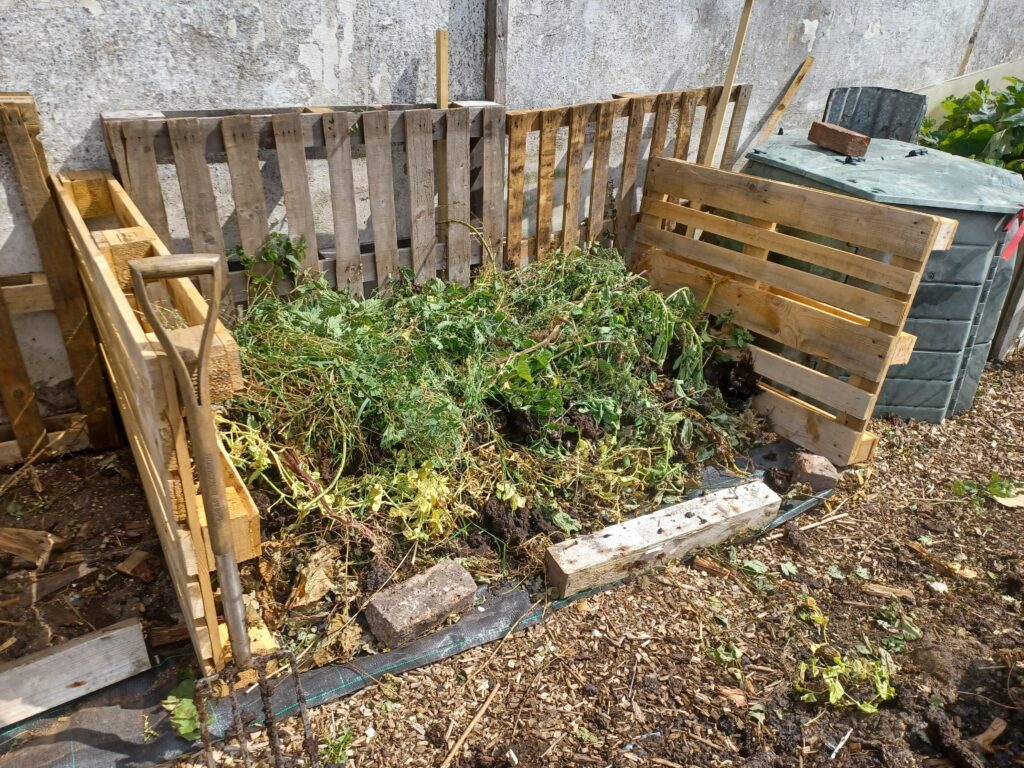
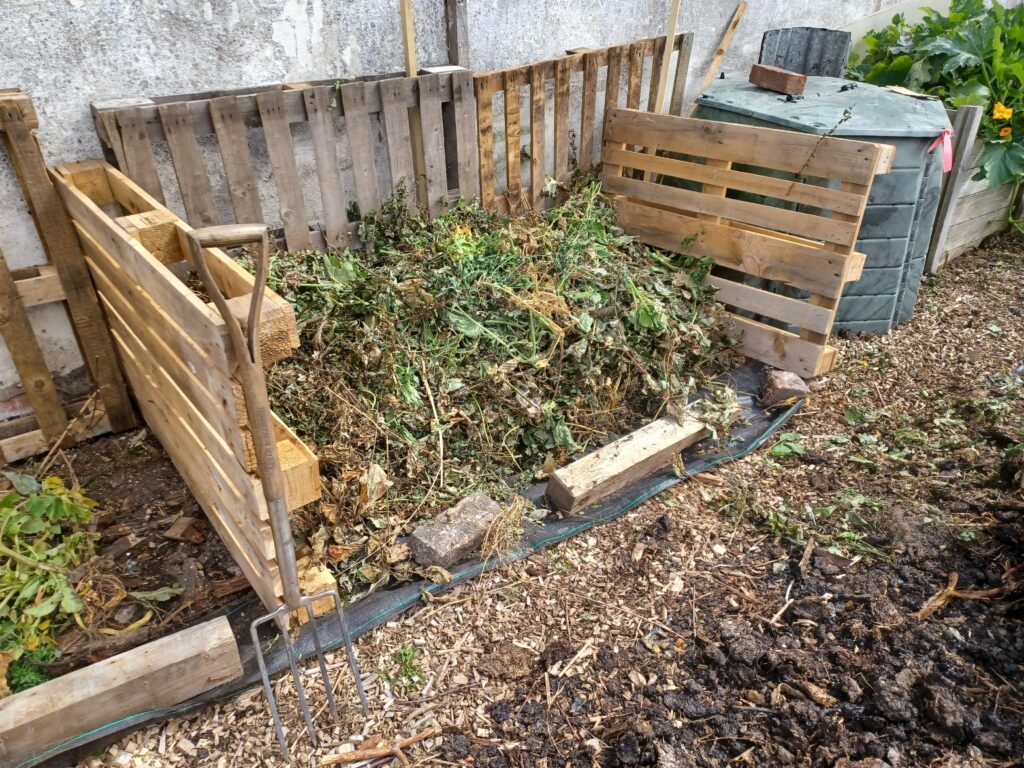
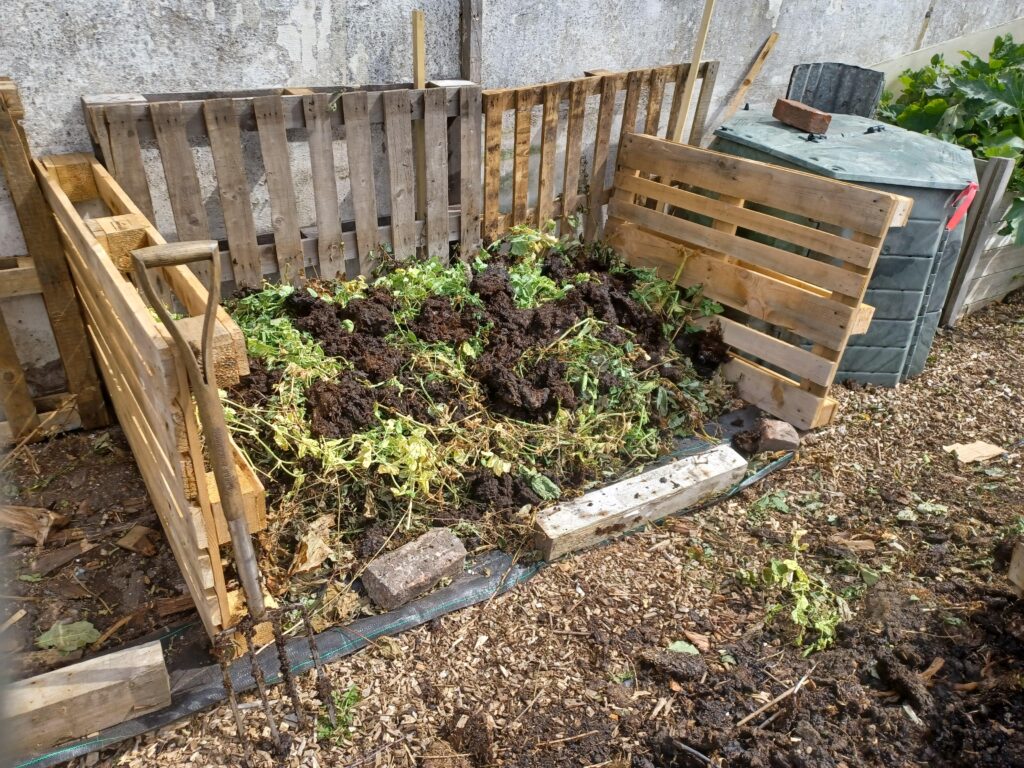
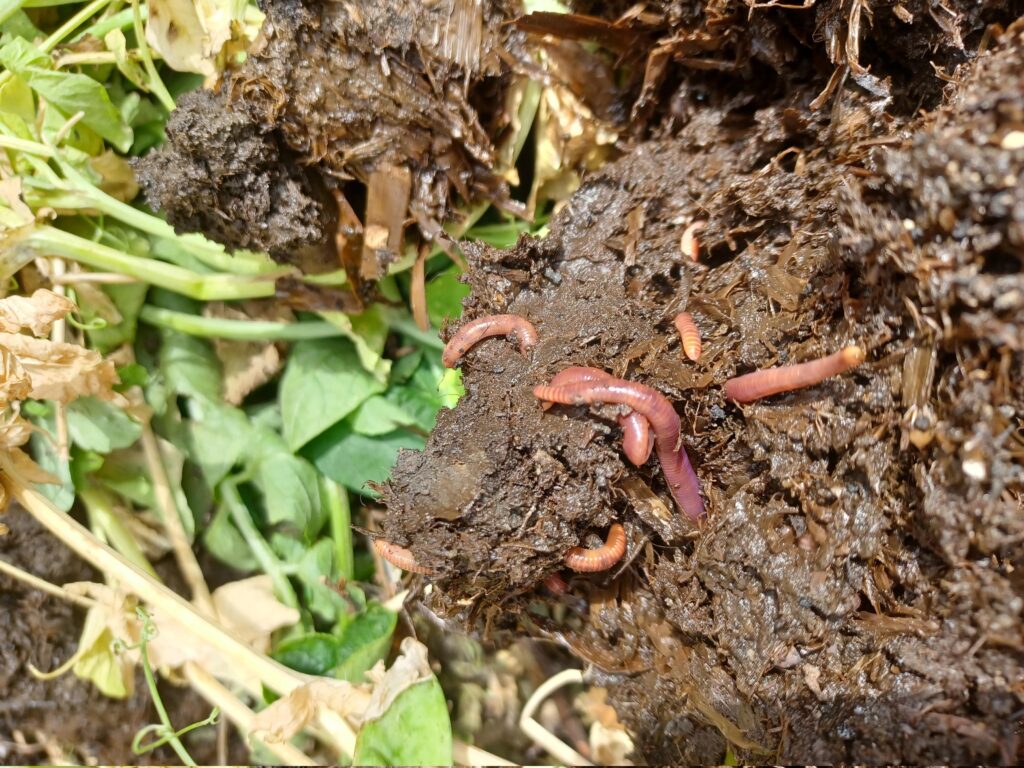
Finally we gave it all a good soak – moisture is really important! – and covered it. Covering it helps to keep the moisture in, and the heat up in the colder months.
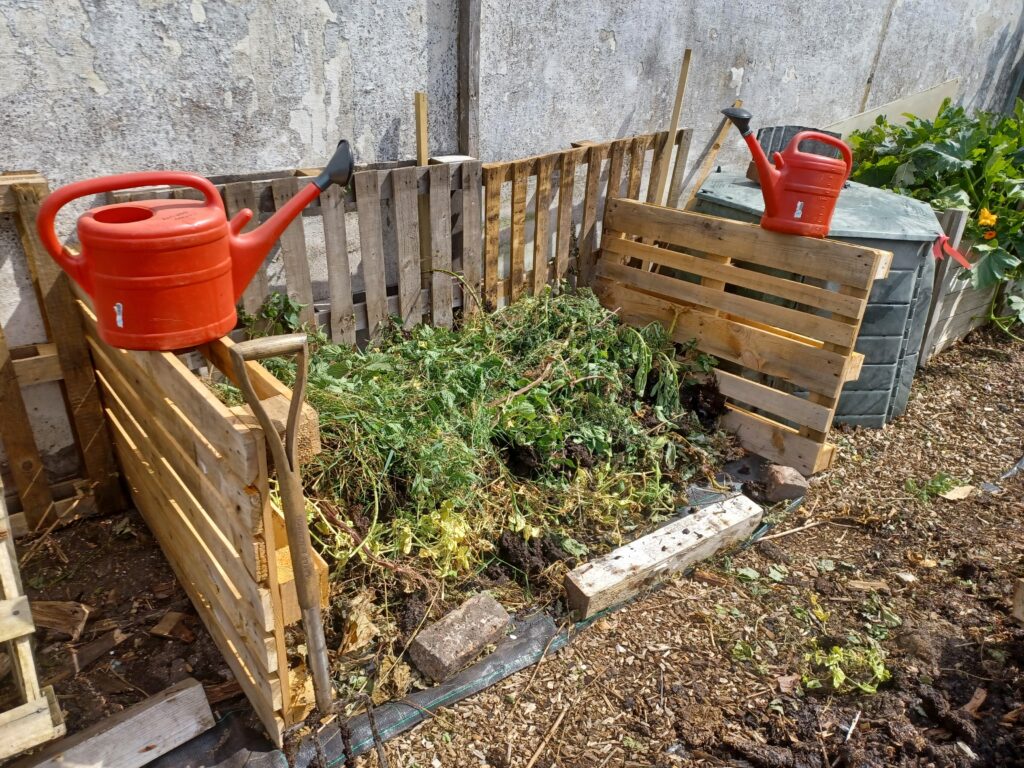
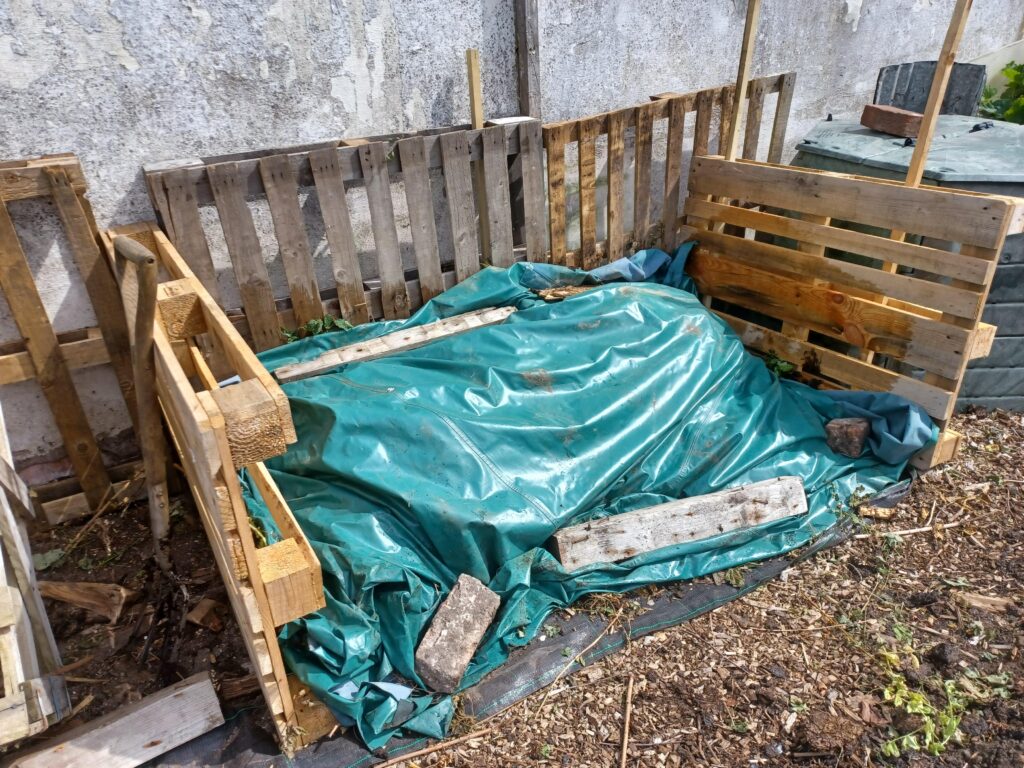
Now we continue to add garden waste, observing the brown/green layer rule – grass cuttings, dry leaves, hedge trimmings, sticks, etc.
Recently, we have had vast amounts of apple pulp from our various open days and apple pressing events, so I have been shovelling away trying to cut it in with as much dry material as I can find around the place… fortunately with the change in season, it’s becoming easier. I mixed about ten layers of apple pulp with woodchip, fresh green nettles, dry leaves, and some leftover hedge trimmings. Activated with some wormy manure scattered through the pile and left for just one day, the pile reached 65°c the next time I checked on it, and has since settled to a much more gentle 50°c
Compost bins
Bins are great for space saving, moisture and heat retention, and they keep it all looking pretty neat in your garden. Filling a bin in layers then leaving it for 3 months, turning it, then leaving for another 3 months will provide decent compost.
Direct planting into compost
Both the Hot bed and the Hügel bed harness the bioactive heat generated from the decomposing materials below. They’re essentially compost piles with soil on top and heat-loving crops planted directly into them. The hot bed had 2 year old, partially decomposed compost mixed with nettles, sawdust and manure, and did really well to grow some exceptional courgettes this year.
The Hügel, which is filled with varying sizes of rotten logs, woodchip, and hedge trimmings) didn’t do so well this year – as expected – as usually the buried materials need at least a year to plug into the mycorrhizal network and start functioning properly.
Habitat creation
Our dead hedge is useful for larger sticks that would require processing before composting, and provides both a small screen of protection from the wind and a valuable habitat for bugs and spiders, who appreciate the densely packed dry materials as a place to make a home.
The leaf pile rarely makes it to full decomposition as I am always using the dry leaves to balance out the greens in the compost, but they’re really useful to have on hand, and worms love to live amongst the layers.
Manure is not only an exceptional innoculator and activator in our piles, but it it also a great soggy place for beetles and worms to thrive.
Fast composting
Hot bins are expensive and fairly high tech, but we were lucky enough to be gifted one by friends who moved away. It’s basically a thick walled black polystyrene box. Hot bins work fast, at high temperatures, and are capable of breaking down a lot of the material you wouldn’t normally want in your compost – such as cooked food and citrus – and they’re sealed from pests.
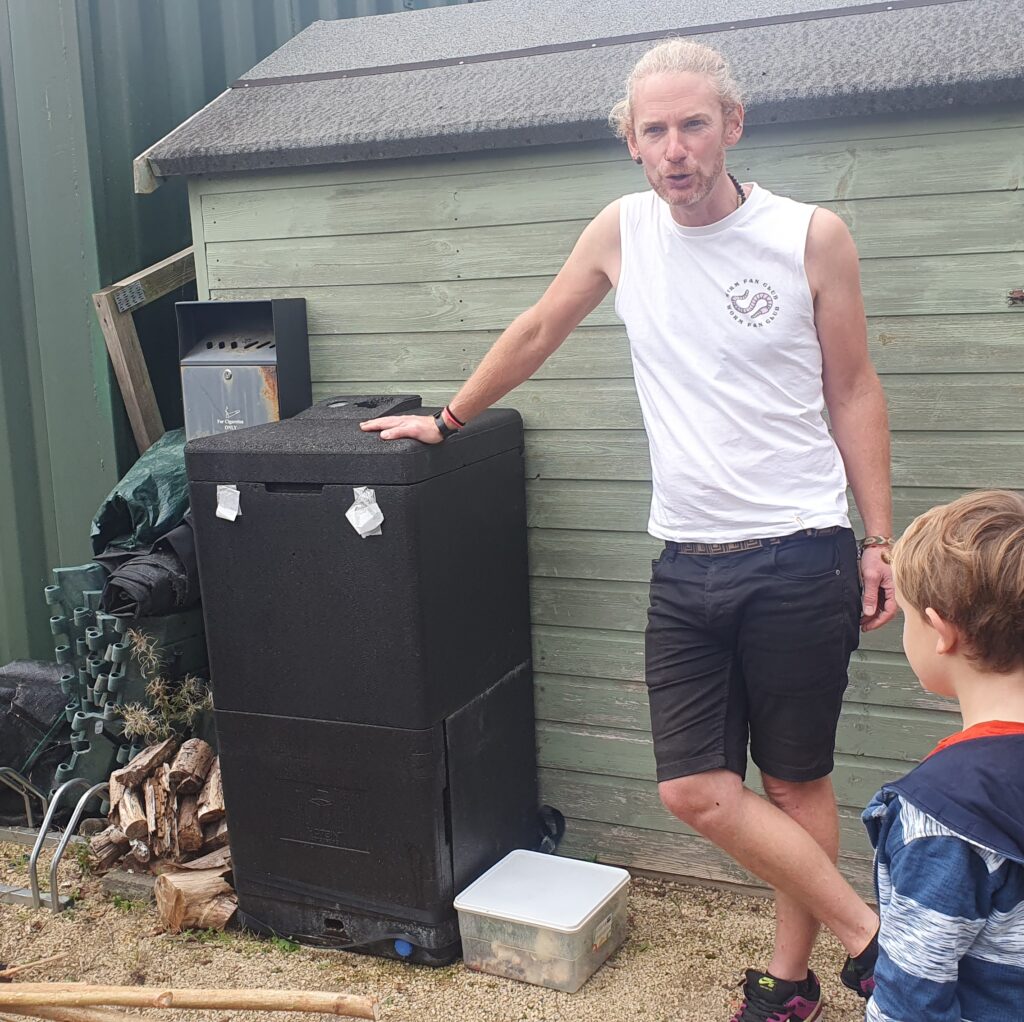
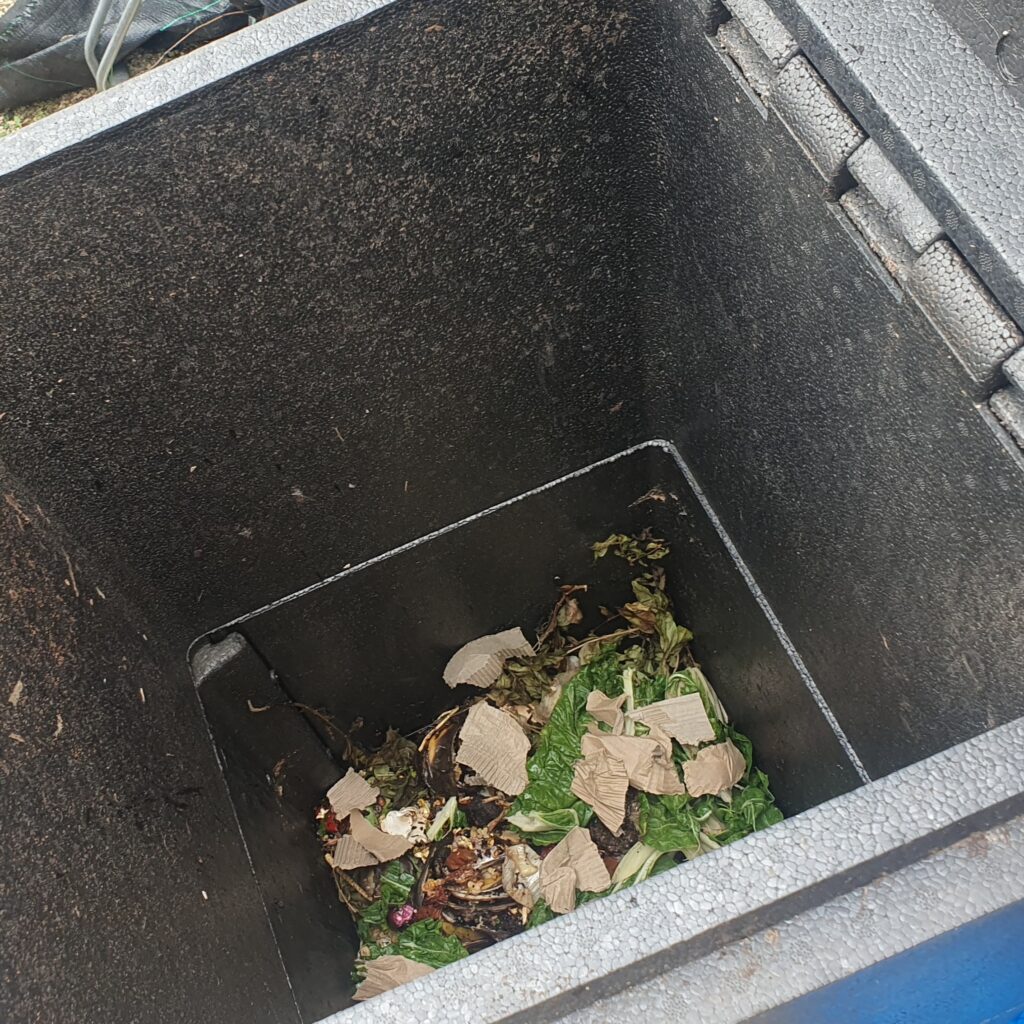
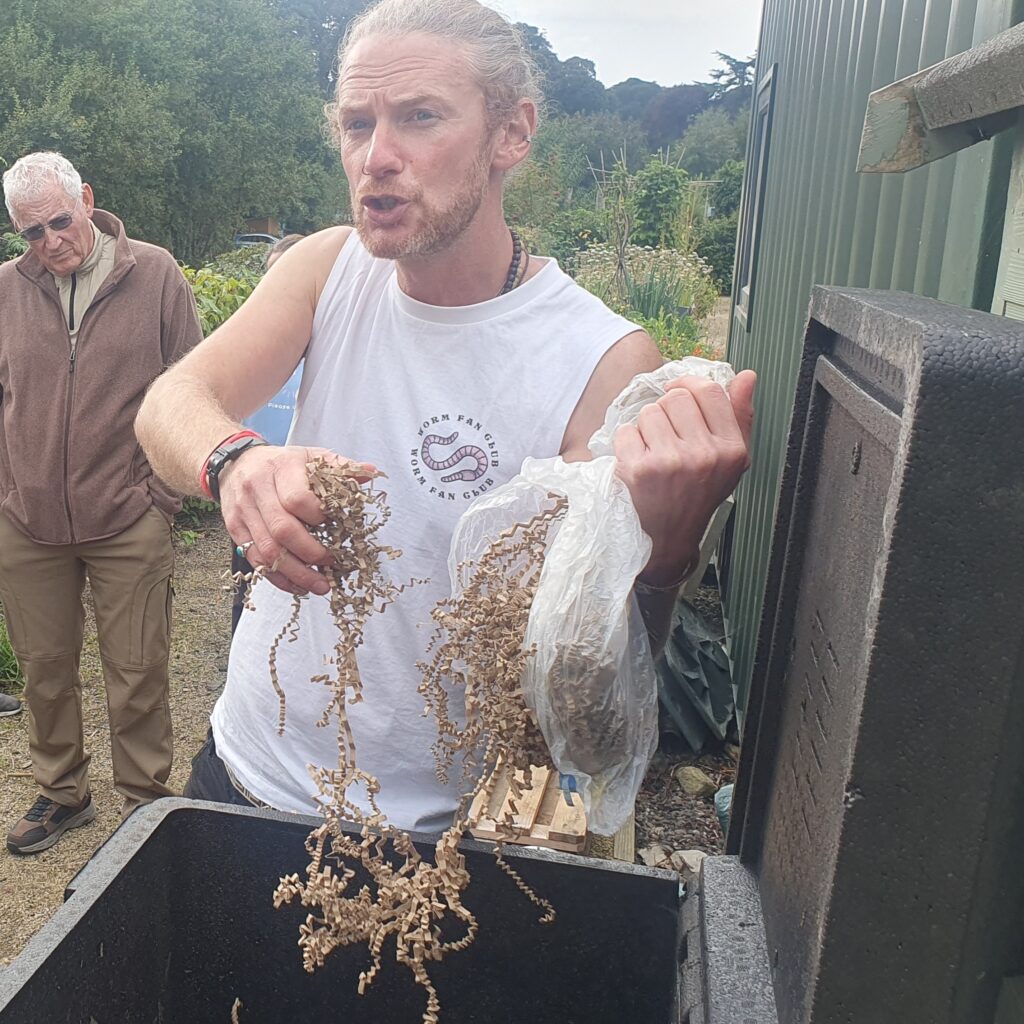
Just like with other methods, you want a combination of green and brown materials, balanced and layered. There’s a spigot for draining excess liquid, and you can take the finished compost from a compartment at the bottom. In my experience the hot box produces quite wet compost, and is impossible to turn, so I intend to use a lot of shredded cardboard, eggboxes and paper to keep the mixture dry and airy. I checked on ours yesterday and it was running at 80°c, and steam rose when I peeked in – woah!
We’ll get compost from the bottom of this in 3-4 months, as opposed to the 6-12 months it can take a normal compost bay or bin to finish breaking down.
I will be doing soil tests on the composition, acidity, nutritional value and structure of the various composts as they are produced, so check back in next year for an update and glowing/scathing reviews!
Composting at Cambo Gardens
Earlier this year, we visited Cambo Gardens in the East Neuk of Fife during their inspiring Composted festival that ran from May to July and explored the various methods and techniques used to compost green waste. On a large estate like Cambo with tonnes of grass, leaves, tree clippings, and of course the many beautiful plants inside the walled garden, they needed a solution that was both capable of handling large amounts, but was also accessible for the small team of staff at the gardens to contribute to easily.
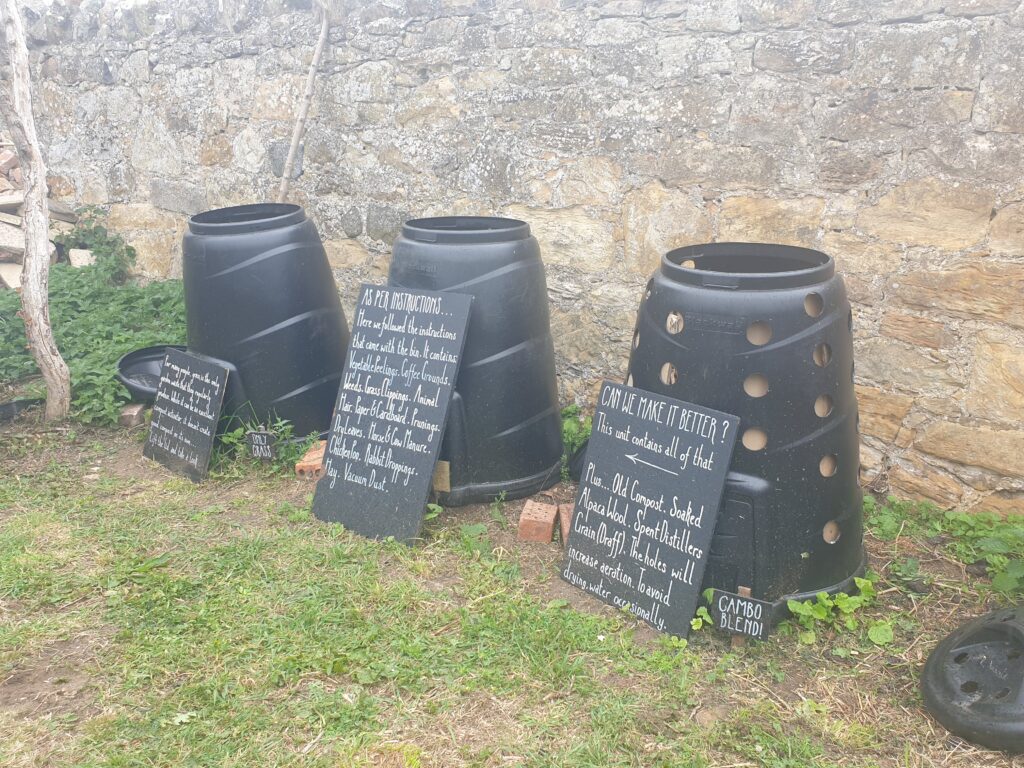
The site had three dedicated compost bays built into the outer walls of the garden and the team would wheelbarrow it all up and dump it on. Once every few months, they would use a small tractor to turn the piles, which would mix the ingredients as well as introduce some air into the basic, randomly dumped wheelbarrowloads. It worked well and produced very good mixed compost, which would be spread on the garden next year. They were also creating vast bays of leaf mould (slow leaf method, ideal for fine seed mix compost) deep in the forest, and had a few habitat piles of rotting mossy logs around the place to encourage insects and fungi to populate them.
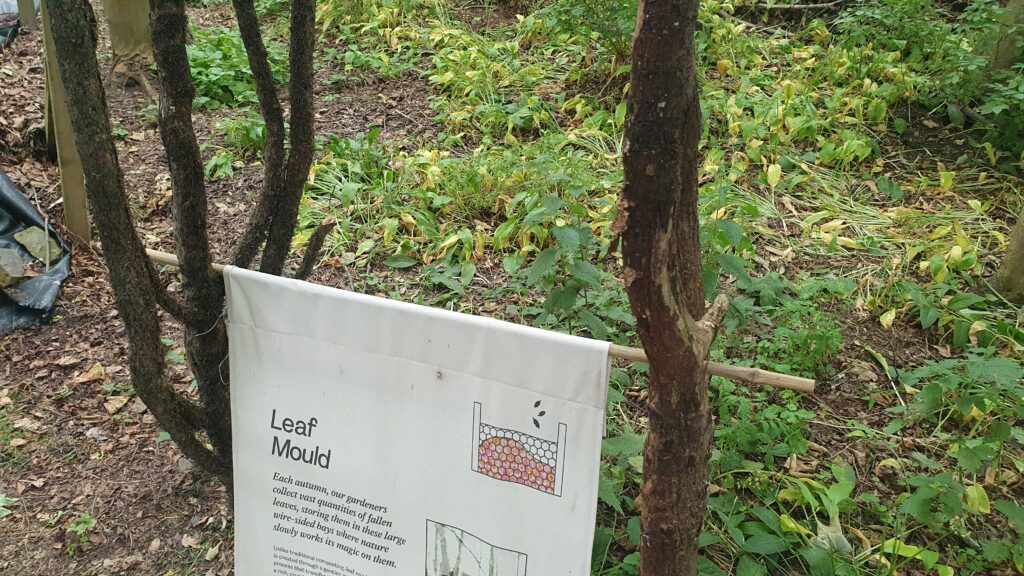
As a small science experiment, Cambo used the same 220L bins we distributed at the composting workshop and explored what would happen if they were tweaked in different ways: one was filled purely with grass, one had multiple air holes drilled into it and the other was managed exactly as the instructions dictated.
- The one with grass just stagnated: there was no oxygen, and it stunk.
- The one with air holes actually dried the mixed garden waste so that it didn’t break down – they had to eventually plug the holes with cardboard.
- The third, instruction-accurate one was functioning nicely and seemed to be well on it’s way to producing some lovely dark wormy compost.
No garden? No problem!
If you don’t have a garden, you can still make compost! Amy is composting in their kitchen, in one small cupboard, using…
- Bokashi – fermented food waste.
- Vermicomposting – worms!
Read about our experience with bokashi and vermicomposting here!
